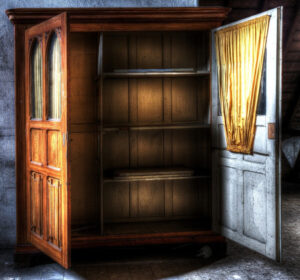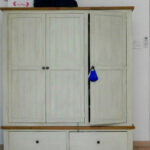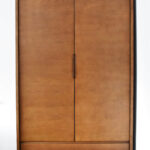Wardrobes are more than just storage spaces—they’re essential for keeping our clothes organized and protected. However, these confined spaces can easily become breeding grounds for mould if not properly maintained. So its important to get hold of some tips to prevent mould in your wardrobe, protecting your clothes, shoes, accessories and your health.

The dark, enclosed environment of a wardrobe is an ideal breeding ground for mould, especially when combined with moisture from damp clothing or overall high humidity levels.
1. Ensure Proper Ventilation

- Keep wardrobe doors slightly open from time-to-time to allow air circulation.
- Install a small vent or louvered doors to improve airflow.
2. Use a Dehumidifier
- Place a small dehumidifier in or near your wardrobe to reduce moisture levels.
- Choose desiccant dehumidifiers or moisture absorbers for smaller spaces.
- Manage the overall humidity in your home if this is consistently high.
3. Regularly Clean and Declutter

- Remove unnecessary items to avoid overcrowding of wardrobe contents. Overcrowding makes it easier for condensation to occur, reduces air circulation and provides an effective place for mould to hide out-of-sight.
- Regularly dust and clean the interior surfaces of your wardrobe.
- Only store clean clothing and other items as dirt and other organic matter can feed mould growth.
4. Avoid Storing Damp or Wet Items
- Make sure that clothes and shoes are completely dry before placing them in your wardrobe.
- Air out all such items after use, especially if they’ve been exposed to moisture. Shoes in particular are prone to being damp inside from being worn and should be left to air-dry before being placed in a wardrobe.
5. Use Moisture-Absorbing Products

- Place silica gel packets, activated charcoal, or baking soda in your wardrobe to absorb excess moisture. Replace these items regularly to maintain their effectiveness.
- If you do choose to store clothing items in plastic boxes, which are not breathable, make sure to add such products for protection against mould.
6. Manage Your Clothes Hangers
- Choose for plastic or metal hangers or sealed(varnished) wooden ones -unsealed wood absorbs and retains moisture.
- Keep a small space between hangers to encourage airflow.
7. Keep Wardrobe Doors Closed During Humid Weather

- Close doors to prevent water-logged air from entering your wardrobe during rainy or humid days. Similarly, if the wardrobe is near to moisture-producing areas i.e. bathroom/kitchen.
- Use a small fan to help circulate air inside the wardrobe, or blow it outwards, if necessary.
8. Store Clothes in Breathable Garment Bags
- Avoid using plastic covers, which can trap moisture.
- Choose cotton or other breathable materials for garment bags.
9. Avoid Overpacking Shelves

- Leave some gaps between items on shelves to allow air movement.
- Rotate items periodically to prevent stagnant air pockets.
- Plastic-coated wire shelves allow for better air circulation than solid shelves.
10. Avoid Carpeted Floors in Closets
- Replace carpets with moisture-resistant flooring like tiles or vinyl.
- If you prefer a textured warmer floor covering in our wardrobe, use rugs that are easy to remove, clean and dry.
11. Use Scented Sachets or Essential Oils

- Lavender, cedarwood, and tea tree oil can help repel mould and mildew.
- Place sachets or cotton balls with a few drops of essential oil in your closet.
12. Be on Alert for, and deal with, Musty Smelling Clothes
- If your clothes smell musty, it’s time to act. Remove them from the wardrobe immediately and check for the underlying moisture (and/or mould) issue causing the problem.
- Additionally, learn about and use effective techniques to eliminate these odours from your clothes to keep them fresh and wearable.
13. Refresh the Interior of Wardrobes

- Try to empty, clean, and dry the insides of wardrobes thoroughly on occasion. This helps to keep them fresh and aired out, limiting the possibility of mould growth.
- Clean wardrobe surfaces with a solution of vinegar or hydrogen peroxide to kill mould spores. Allow surfaces to dry completely before placing items back in the closet.
14. Light up the inside of your wardrobe.
Use low-wattage or battery-operated LED lights in your wardrobe.
- These lights can help maintain a dry environment by generating minimal heat, which can reduce moisture levels that mould thrives on.
- This energy-efficient and cost-effective lighting solution will also help you easily spot any potential mould growth before it becomes a problem.
15. Leave Space Between Wardrobe and Walls

Position wardrobes slightly away from walls to enhance air circulation. This also limits the chances of any problems of damp or mould hiding away.
Preventing mould in your wardrobe is not just about maintaining the condition of your clothing but is also part of ensuring a healthy living environment. By incorporating these simple yet effective tips, you can keep mould at bay and protect your clothing from damage. Stay proactive and keep mould out for good!